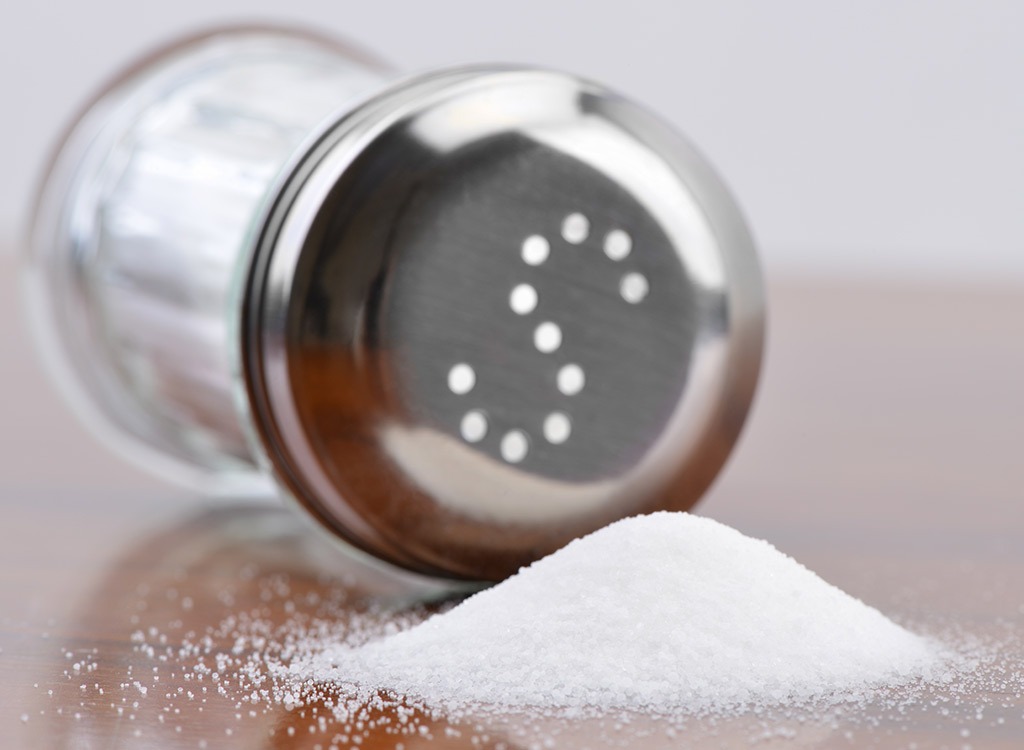The 4-Step Plan to Break Your Salt Habit

Force of habit may actually be more to blame than a salt addiction, according to a study review in Neuroscience and Biobehavioral Reviews. The scientists point out that people often salt their food before they’ve even tasted it, suggesting that we’re often on autopilot when we pick up the saltshaker; it’s almost like the muscle memory you develop after performing an exercise over and over again. What that means is that to break your salt habit, you may just need to change your habits, and your taste buds will follow suit. Follow these tips from the new book 20 Pounds Younger, from Yahoo! Health editor Michele Promaulayko—available right in time for the New Year!
Week 1: Rid your pantry of highly processed eats.
How do we define “highly processed”? Keri Glassman, MS, RD, founder of Nutritious Life, a nutrition practice based in New York City, says there are many ways: long shelf life, number of ingredients, number of artificial ingredients, etc. Ask yourself, “Is it real food?” One of the key telltale signs of highly processed food, she says, is sodium content above 140 milligrams per serving. (This is a threshold even the FDA abides by: In order to be labeled “low sodium,” soups must contain 140 milligrams of sodium or less per serving.) And make sure to check nutritional panels of foods you don’t suspect are super salty, too: A recent Centers for Disease Control and Prevention (CDC) report revealed that bread, cold cuts, and cheese are top sources of salt in the American diet — even more so than savory snacks like chips, popcorn, and pretzels.
Week 2: Replace one prepackaged snack with fresh fruit or vegetables each day.
Even if you’ve cleared out the junk from your pantry, you may still be tempted by salty vending-machine snacks or convenience-store foods. Your goal: Gradually replace these processed snacks with whole-food options. “Continue to replace one prepackaged snack with fresh fruits or vegetables per day until all snacks are fresh,” says Glassman. “I don’t mind when people use a little bit of sea salt when cooking. It’s the packaged, processed foods that are the worst.” (Restaurant food is also bad, so restrain yourself from using the saltshaker when dining out.)
Week 3: Toss out your saltshaker.
This isn’t a permanent move! You just need to train your taste buds not to depend so much on salt for pleasure. “When people cut salt out of their diet, and then it is reintroduced, they can use lower levels of salt,” says Lucy Donaldson, PhD, associate professor of physiology at the University of Nottingham, in England. “And they often prefer lower levels, even if they previously had high salt intake.” After a couple weeks, bring back the salt- shaker, but make a point of using it only after you’ve tasted your food. You may find that you don’t need it after all.
Week 4: Incorporate herbs and spices into as many meals as possible.
Once you’ve brought back salt, start experimenting with herbs and spices when you’re cooking. “That way, you’re less likely to go back to the salt-shaker,” says Glassman. Read: If you learn to add flavor in other ways, you won’t need to depend on salt to stimulate your taste buds — and you’ll find it easier to resist the urge to sprinkle the stuff liberally on every meal you eat.
Reprinted from 20 Pounds Younger by Michele Promaulayko with Laura Tedesco. Copyright (c) 2015 by Rodale Inc. by permission of Rodale Books. Available wherever books are sold, including Amazon.